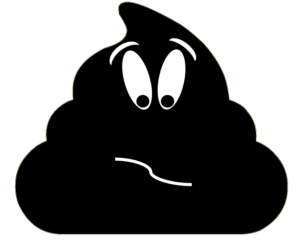How to be a “Poo Detective”
One of the reasons I have such a passion for digestive health is that it can offer a glimpse into the inner workings of our whole body! When you think about it, when you are sick you will often have digestive issues, when you are stressed you will certainly see changes, and all of these can show up in your poop! There are many more subtle changes in your poo that can give you (and me) incredibly valuable information about your health.
These days poo talk is fashionable, many people talk about the consistency, form and frequency. But what does it all mean? And what happens when your poo has, what I like to call, accessories? In this article we will break it all down!
Digestive System Basics
The digestive system is essentially a 30 foot long tube that begins in our mouth and ends with our anus. Each different section of our digestive tract has its own function, whether it is chewing, breaking down food in the stomach or absorbing it in the intestines. In order for everything to work properly we need to have coordination between each different compartment. We also need to have proper communication to and from our brain so that each section of this tube knowns its role. And this means that MANY things can go wrong
Interesting facts about the digestive tract
- Your whole digestive tract is actually considered to be outside of your body!
- 70-80% of your immune system, known as your mucosal associated immune system (MALT) is in your digestive tract. This is why it is so critical to optimize digestive in any condition of the immune system (ie. Allergies, asthma, auto immune conditions)
- You have more bacterial cells in your body than human cells (10 to 1!!) which is why the future of medicine (in my opinion) will be in modulating microbial population
- Flatulance, or toots if you are a lady, can offer insight into what type of bacteria are present in your intestinal tract! Hydrogen, methane and hydrogen sulfide (rotten eggs!) are of the many types of gas produced by our bacteria.
So Now, about that Poo
One of the most basic assessments of poop is the Bristol Stool Chart, which rates the consistency and form of your poo.
Type 1: Separat e Hard Lumps (Or Rabbits poos)
e Hard Lumps (Or Rabbits poos)
Type 2: Lumpy Sausage-like (Hard to pass)
Type 3: Sausage-like with cracks in the surface
These poo types suggest that you may have varying degrees of dehydration or your body is over extracting water (due to stress or bacterial imbalances). This also suggests that you may not be in taking enough soluble fiber to add appropriate bulk to your stool. In some cases, Type 2 hard to pass poos can be aggravated by too many dense protein sources, like protein bars or shakes. This is something to watch out for!
Type 4: The Smooth Sailing Curve or Snake
In the of the Bristol Stool Chart Type 4 is your ideal form and consistency. As long as you are having a Type 4 at least once per day, and it doesn’t have any of the Poo Accessories, listed below, then you get a pat on the back!
Type 5: Soft, Well Defined Blobs
These poos happen from time to time, especially when we have eaten different meals then we are used to, or are feeling a little bit off. Generally, they are nothing to fret about! Always ensure that you are eating enough insoluble fiber to help bulk up theses fluffs.
If you fluctuate between Type 5/6 and Type 1 check in with your doctor about bacterial imbalances for food irritants.
Type 6: Mushy with Ragged Edges
Type 7: Liquid with no Solid Stool Pieces
Type 6 and Type 7 are unhappy poos! These almost always suggest a bacterial imbalance, inflammation or a hyperactive colon! These sad guys almost always have accessories which can give us more information about the root cause.
Now for the Poo Accessories and Characteristics
Whether your bowel movements float or sink, what colour they are, and if they have food or mucus in them can tell us a lot about what could be causing other symptoms like brain fog, joint pain and weight gain or loss.
 Black poo, especially if tarry or with coffee ground like appearance, is am immediate referral to your doctor! This could be a sign of bleeding in the upper digestive tract and should be investigated if happening consistently. (PS Iron supplements can also give a black tinge to a normal looking poo)
Black poo, especially if tarry or with coffee ground like appearance, is am immediate referral to your doctor! This could be a sign of bleeding in the upper digestive tract and should be investigated if happening consistently. (PS Iron supplements can also give a black tinge to a normal looking poo)
Green poo means things are moving through quickly! (Or you ate a lot of green juice!) We have a substance called bile that is excreted from our gallbladders. Bile is green in colour and if it doesn’t have time to break down, and emulsify fat, it will remain green in colour.
Yellow poo suggest malabsorption of fat, especially when it is combined with a floating poo, or if it leaves a greasy halo around the toilet bowl. This happens with intestinal inflammation and also with celiac disease.
White poos tell us that there is a lack of bile in your stool. You will remember from the green poop conversation that bile comes from the gallbladder and emulsifies fat. If you have a bile duct obstruction, or improper flow, then your stool can look white, or clay like.
Bright red blood on your poo and toilet paper can suggest hemorrhoids, that a Type 2 poo just passed, or something more serious such as colon polys or cancer. Chat about this one with your doctor!

Mucus that is sitting on, or weaved into your poo, is a dead give away that you have some intestinal inflammation, either from bacterial imbalance, food sensitivities (most often both), or inflammatory bowel disease. How do you know if you have mucus in your stool you ask? You will see floating pieces of what looks like boogers around the edges or built in.
Undigested Food, aside from corn, is not a normal occurrence. We should not be seeing pieces of carrot, apple, leafy green, tomato skins or anything in our poo! This happens for a number of reasons, including decreased digestive enzyme production, not chewing properly and stress.
How to Make a Happy poop!
Although there are many things that can go wrong with your poo, the keys to a happy, healthy brown Type 4 No2 lie in diet and lifestyle. The biggest components to focus on are eating an anti inflammatory diet, discovering what your person food triggers are and avoiding those, drinking 8-10 cups of fresh water per day, eating lots of soluble and insoluble fiber, probiotic rich foods and chewing your food plenty of times before you swallow! It is also ideal if you can step away from your desk while you eat, taking a few minutes to sit, relax and breath before you take your first bite.
If you have tried all of the above suggestions and are still having issues then you might need more targeted digestive support. You may need digestive enzymes, specific strains of probiotics or even eradication of intestinal bacteria or parasites. For these things it is best to talk to your healthcare professionals!






